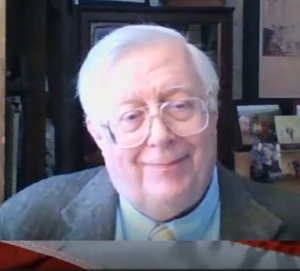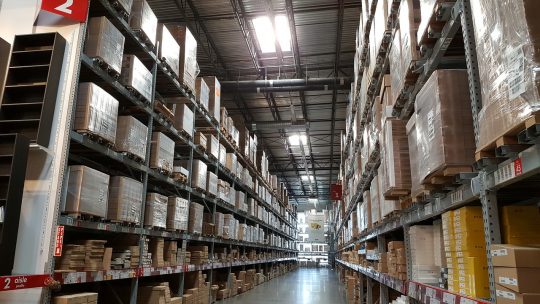Home » Posts tagged 'recession' (Page 6)
Tag Archives: recession
Peter Schiff: We’re Heading for Recession No Matter What the Fed Does With Rates
Peter Schiff: We’re Heading for Recession No Matter What the Fed Does With Rates

Jerome Powell took center stage last week and the Federal Reserve chair didn’t do anything to dampen expectations of a rate cut. His comments sent both stocks and gold higher.
Peter Schiff recently appeared on RT Boom Bust with University of Amherst economics professor Richard Wolff to talk about the Fed and its impact on the markets. Pete said no matter what the Fed does, a recession is coming.
Peter opened the interview saying the main reason the Fed is cutting rates is to try to keep the air from coming out of the stock market bubble.
The other reason is they’re trying to keep this so-called expansion going. There they’re going to fail. I think we’re headed for recession regardless of what the Fed does with rates. The only thing the Fed is going to succeed in doing is reviving inflation. The Fed claims inflation is too low and they want to make sure the rate goes up. Well, that’s going to be their only success. But unfortunately, that’s also going to be their biggest failure.”
Wolff agreed with Peter’s view that a downturn is coming, noting that we are overdue for a recession. He said the sudden dovish turn by the Fed is a “desperate move” by to try to postpone the downturn until after the 2020 election.
The host mentioned a tweet Peter put out during Powell’s trip to Capitol Hill.
Peter said he never heard the question asked, but it would have been a great way to put Powell on the spot and ask him if he agrees with the president.
…click on the above link to read the rest of the article…
Bizarro World: The Herd Has Truly Gone MadYou’re not crazy. The world we now live in is
Bizarro World: The Herd Has Truly Gone MadYou’re not crazy. The world we now live in is
Men, it has been well said, think in herds; it will be seen that they go mad in herds, while they only recover their senses slowly, and one by one.
~ Charles Mackay (1841)
Like me, you may often feel gobsmacked when looking at the world around you.
How did things get so screwed up?
The simple summary is: the world has gone mad.
It’s not the first time.
History is peppered with periods when the minds of men (and women) deviated far from the common good. The Inquisition, the Salem witch trials, the rise of the Third Reich, Stalin’s Great Purge, McCarthy’s Red Scares — to name just a few.
Like it or not, we are now living during a similar era of self-destructive mass delusion. When the majority is pursuing — even cheering on — behaviors that undermine its well-being. Except this time, the stakes are higher than ever; our species’ very existence is at risk.
Bizarro Economics
Evidence that the economy is sliding into recession continues to mount.
GDP is slowing. Earnings warnings issued by publicly-traded companies are at a 13-year high. The most reliable recession predictor of the past 50 years, an inverted US Treasury curve, has been in place for the past quarter.
Yet the major stock indices hit all-time highs earlier this week. And every one of the 38 assets in the broad-based asset basket tracked by Deutsche Bank was up for the month of June — something that has never happened in the 150 years prior to 2019.
It has become all-too clear that markets today are no longer driven by business fundamentals. Only central bank-provided liquidity matters. As long as the flood of cheap credit continues to flow (via rock-bottom/negative interest rates and purchase programs), keeping cash-destroying companies alive and enabling record share buybacks, all boats will rise.
…click on the above link to read the rest of the article…
Trying To Prevent Recessions Leads To Even Worse Recessions
Trying To Prevent Recessions Leads To Even Worse Recessions
Deutsche Bank strategists Jim Reid and Craig Nicol wrote a report this week that echos what I and other Austrian School economists have been saying for many years: actions taken by governments and central banks to extend business cycles and prevent recessions lead to even more severe recessions in the end. MarketWatch reports –
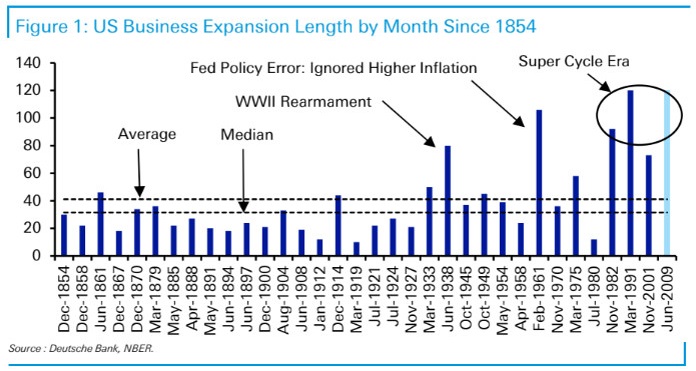
The 10-year old economic expansion will set a record next month by becoming the longest ever. Great news, right? Maybe not, say strategists at Deutsche Bank.
Prolonged expansions have become the norm since the early 1970s, when the tight link between the dollar and gold was broken. The last four expansions are among the six longest in U.S. history .
Why so? Freed from the constraints of gold-backed currency, governments and central banks have grown far more aggressive in combating downturns. They’ve boosted spending, slashed interest rates or taken other unorthodox steps to stimulate the economy.
“However, there has been a cost,” contended Jim Reid and Craig Nicol at the global investment bank Deutsche Bank.
“This policy flexibility and longer business cycle era has led to higher structural budget deficits, higher private sector and government debt, lower and lower interest rates, negative real yields, inflated financial asset valuations, much lower defaults (ultra cheap funding), less creative destruction, and a financial system that is prone to crises,’ they wrote in a lengthy report.
“In fact we’ve created an environment where recessions are a global systemic risk. As such, the authorities have become even more encouraged to prevent them, which could lead to skewed preferences in policymaking,” they said. “So we think cycles continue to be extended at a cost of increasing debt, more money printing, and increasing financial market instability.”
…click on the above link to read the rest of the article…
Waiting For The Black Swan
Waiting For The Black Swan
War with Iran would be the beginning of the end
Two more tankers were attacked near the Strait of Hormuz on Thursday morning (6/13/19) in the Gulf of Oman, and if hostilities advance we could be facing a ‘black swan’ event. One that changes everything, and divides the world into ‘before’ and ‘after’ periods.
A lot of us are waiting for ‘something’ to happen. We know that there are too many unsustainable trends and practices running and we fall into the “let’s just rip the Band-Aid off” camp. Some, like myself, have lost faith in the political leadership and institutions and doubt they retain any capacity to attend to anything more than their own selfish interests, let alone manage the difficult tasks ahead rooted as they are in systems theory and managing complexity.
So, let’s get on with it already. Bring it on. Black swans are welcome to those who feel a swift kick to the behind is sometimes needed to begin setting things straight.
Like many, I am also conflicted because I also know that getting onto a new path will be disruptive and probably quite economically and financially painful for everyone, myself included. Hoping for ‘something to break’ and hoping nothing breaks hang in an uneasy balance.
Luckily, my hopes and wishes have nothing to do with what’s going to happen, or when. I might as well be performing a secret hand ritual before the TV in my living room to ensure that my team’s basketball free-throw goes in. The dry tinder of the next bonfire was laid down over many years and decades and it will catch fire when it does, no matter how much denial or how many superstitious practices we employ.
…click on the above link to read the rest of the article…
Recession Already in Place, Watch Out – John Williams
Recession Already in Place, Watch Out – John Williams
You might be wondering why the Trump Administration is calling for rate cuts and money printing with all the good news about the economy. Economist John Williams of ShadowStats.com knows why and contends, “We have a recession in place. It’s just a matter of playing out in some of these other funny numbers. The reality is on the downside, where you have mixed pressures right now. People who are really concerned about the economy right now, and that includes President Trump looking at re-election, he’s been arguing that the Fed should lower rates, and I am with him. The Fed created this circumstance. They are pushing for the economy on the upside because they want to continue to keep raising rates. Banks make more money with higher rates, and they are still trying to liquidate the problems they created when they bailed out the banking system back in 2008.”
Williams strips out all the financial gimmicks in his work that make things look better than they really are to give a true picture of the real financial health. Take for example the recent reportedly good news of the trade deficit narrowing. Williams says, “What we saw was the very unusual narrowing of the deficit . . . that’s generally good news . . . but if you look at why the trade deficit was narrowing, it wasn’t that we were having new surging exports . . . instead, we were having collapsing domestic consumption. People weren’t buying things. People were not buying goods. So, the imports were falling off, and that narrowed the deficit. That is not a healthy sign. The last time you saw something like that was the beginning of the Great Recession (2008–2009). . . . We still haven’t recovered from the Great Recession.”
…click on the above link to read the rest of the article…
Wealth Bubble Leaves U.S. Economy in Uncharted Territory

Wealth Bubble Leaves U.S. Economy in Uncharted Territory
There have been numerous signs that the U.S. is likely to go through another major recession at some point. And regardless of when or if a recession happens, it won’t change the fact that the U.S. economy is already in hot water.
At MarketWatch, the “hot water” is explained in terms of a U.S. “wealth bubble” that reveals a peculiar pattern:
Today the United States sits in the midst of the largest wealth bubble in post-World War II history, as measured by household net worth (or wealth) relative to gross domestic product. As I showed in detail recently in the Journal of Business Economics, only two other postwar bubbles come close, with peaks in 1999 and 2006, just prior to the tech stock crash and the Great Recession.
The largest wealth bubble (household net worth relative to GDP) is shown in a chart from the same article. (Shaded areas are recessions):

As you can see at the bottom, the wealth bubble is “5 times the size” of the GDP.
But notice how the wealth bubble “pops” just before the 2000 and 2008 recessions. If you look at the end of the blue line, it appears the largest wealth bubble since World War II may already be popping.
Also notice how the green line dips before the 2000 tech stock “recession,” and the red line before the 2008 recession (caused mainly by subprime mortgages).
But according to the MarketWatch report, there’s another crucial detail to point out:
In both prior bubbles, the crashes led to a drop in the value of net worth to about 4 times GDP. Even that level remained high relative to prior history, since in no single quarter before 1998 had the household net worth-to-GDP ratio ever reached 4.0 or higher.
With that being said, according to the chart above:
…click on the above link to read the rest of the article…
List of 24 Points Pressing Hard toward Recession
List of 24 Points Pressing Hard toward Recession

- The US stock market is slightly overbought (which is not a positive in terms of head room for more of a rally).
- It’s massively built up on debt that is now more expensive to maintain and/or obtain.
- The Fed is still rapidly tightening money supply and says it will continue to do so for several more months.
- Interest rate increases and money tightening that already happened through this past December will continue to worsen economic conditions until summer because any changes by the Fed have about a half year lag time for the general economy.
- That also means all the tightening that continues between now and September, will continue to pile more and more weight on top of the economy until next February, which is why the Trump admin. is screaming the Fed went too far.
- 2019 Q1 US corporate earnings are coming in almost as poorly as economists said they would, and they don’t look set to start rising much in the next quarter … if at all.
- Measures used to help earnings beat much lower expectations (and not by much) were mostly cost-saving measures, not revenue boosters, or they were mere accounting choices. Earnings are after-tax numbers, so they benefited hugely in 2018 from the Trump Tax Cuts in a way that had nothing at all to do with companies doing better business. They are also reported as a “per share” number, and the main thing that changed was the number of outstanding shares in the denominator as a result of stock buybacks. So, really, earnings were pathetic!
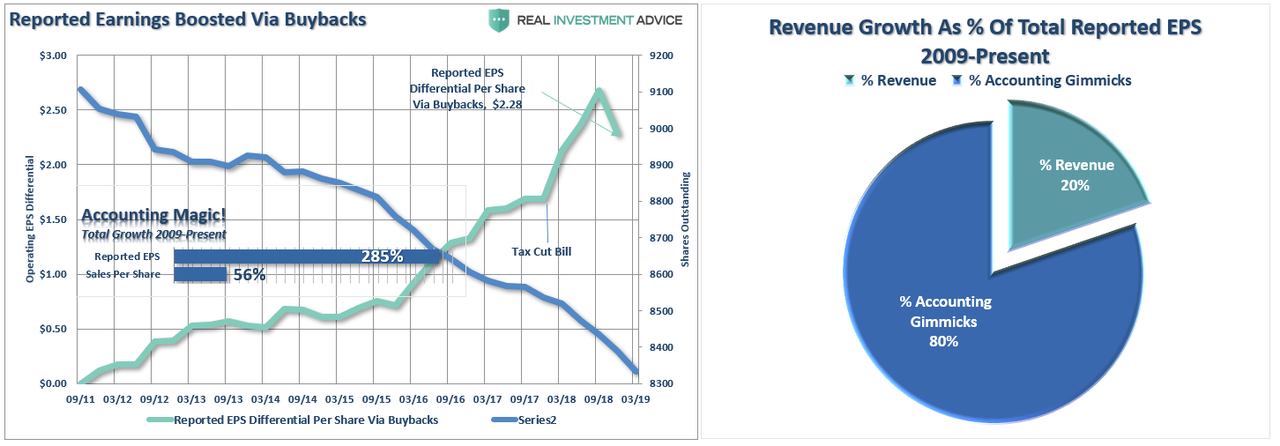
- Transportation is declining as product shipments decline. West-coast port imports plunged 19% from the previous quarter (3% YoY). Trucking lost ground four months in a row.
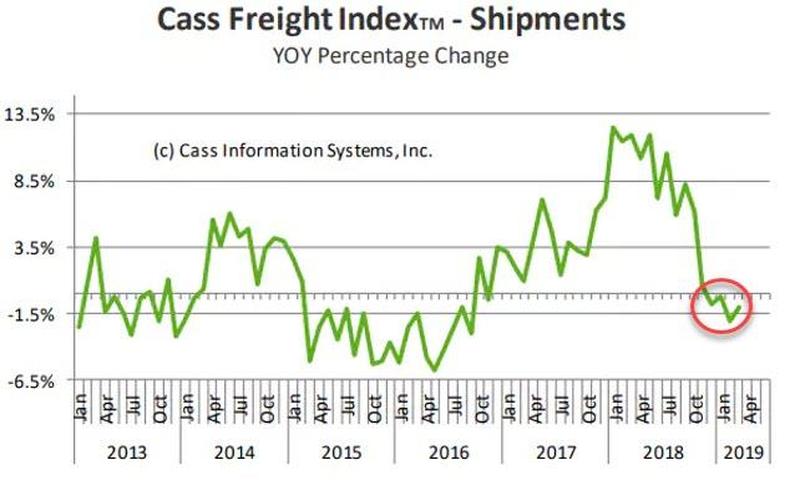
…click on the above link to read the rest of the article…
Japanified World Ahead
Japanified World Ahead
Losing Decades
Too Much, Too Fast
A $10 Trillion Federal Reserve Balance Sheet
Mastering Private Markets
Living on Puerto Rico Time
Regular readers may have noticed me slowly losing confidence in the economy. Your impression is correct and there’s a good reason for it, as I will explain today. The facts have changed so my conclusions are changing, too.
I still think the economy is okay for now. I still see recession odds rising considerably in 2020. Maybe it will get pushed back another year or two, but at some point this growth phase will end, either in recession or an extended flat period (even flatter than the last decade, which says a lot). And I still think we are headed toward a global credit crisis I’ve dubbed The Great Reset.
What’s evolved is my judgment on the coming slowdown’s severity and duration. I think the rest of the world will enter a period something like Japan endured following 1990, and is still grappling with today. It won’t be the end of the world; Japan is still there, but the little growth it’s had was due mainly to exports. That won’t work when every major economy is in the same position.
Describing this decline as “Japanification” may be unfair to Japan but it’s the best paradigm we have. The good news is it will spread slowly. The bad news is it will end slowly, too.
I believe we will avoid literal blood in the streets but it will be a challenging time. We’ll be discussing how to get through it more specifically at the Strategic Investment Conference next month. It is now sold out but you can still buy a Virtual Pass that includes audio and video of almost the whole event. Click here for information.
…click on the above link to read the rest of the article…
Zombified Economy: What Will the Next Recession Look Like?
Zombified Economy: What Will the Next Recession Look Like?

The short answer is nothing like the last.
If you search for “next recession” numerous ideas pop up. Many believe there will not be a recession soon.
Condition Comparison
Conditions are radically different than in 2007 and 2000.
The Fed re-blew a housing price bubble but the number of jobs tied to construction, sales, CDOs, agents and even the impact on banks is a shell of what happened then.
Technology is bubbly, but not like 2000. This is how I see things.
- We will not have bank failures in the US.
- There will be major bank failures or bail-ins in Europe.
- Housing will not have a major role but will strengthen the recession.
- Millennials simply cannot afford houses so housing will not lead a Fed attempt at a recovery even if interest rates plunge.
- Low interest rates will keep zombie companies alive for a while longer .
- Proliferation of retail stores, Walmart, Target, everything requires minimum staffing levels no matter how poor sales become.
- Unemployment will not rise much like last time. Instead, expect to see hours cut.Also expect for many of those currently working two jobs to lose one of them.
- Retail sales will plunge with the reduction in work.
- The impact of the above is very weak profits but not massive labor disruption
- Stocks will get clobbered as earnings take a huge hit.
- Junk bonds also get clobbered on fears of rolling over debt.
- This malaise can potentially last for years.
Zombified Economy
Japan is in a state of zombification and Europe is on the verge.
The US may not and likely will not go through Japanese-like extremes just yet. However, the demography setup is poor, the student debt problem is a huge overhang, boomers unprepared for retirement is a huge overhang, and pensions are a huge overhang.
…click on the above link to read the rest of the article…
Just Before The Great Recession, Mountains Of Unsold Goods Piled Up In U.S. Warehouses – And Now It Is Happening Again
Just Before The Great Recession, Mountains Of Unsold Goods Piled Up In U.S. Warehouses – And Now It Is Happening Again
When economic conditions initially begin to slow down, businesses continue to order goods like they normally would but those goods don’t sell as quickly as they previously did. As a result, inventory levels begin to rise, and that is precisely what is happening right now. In fact, the U.S. inventory to sales ratio has risen sharply for five months in a row. This is mirroring the pattern that we witnessed just prior to the financial crisis of 2008, and it is exactly what we would expect to see if a new recession was now beginning. In recent weeks, I have been sharing number after number that indicates that a serious economic slowdown is upon us, and many believe that what is coming will eventually be even worse than what we experienced in 2008.
And even though I write about this stuff every day, I was stunned by how rapidly inventory levels have been rising recently. The following numbers come from Peter Schiff’s website…
This comes on the heels of the largest gain in wholesale inventories in more than five years in December.
Inventories rose 7.7% from a year ago in January. Meanwhile, sales only rose by 2.7%. Overall, total inventories were $669.9 billion at the end of January, up 1.2% from the revised December level.
The increase in durable goods inventories at the wholesale level was even starker. These inventories were up 11.7% from January a year ago, and are up 17% from January two years ago, hitting $415 billion, the highest ever.
Businesses don’t like to have excess inventory, because carrying excess inventory is expensive and cuts into profits. So they try very hard to manage their inventories efficiently, but if the economy slows down unexpectedly that can catch them off guard…
…click on the above link to read the rest of the article…
The Capitulation of Jerome Powell and the Fed
The Capitulation of Jerome Powell and the Fed
This past week, on March 20, 2019, Federal Reserve chairman Jerome Powell announced the US central bank would not raise interest rates in 2019. The Fed’s benchmark rate, called the Fed Funds rate, is thus frozen at 2.375% for the foreseeable future, i.e. leaving the central bank virtually no room to lower rates in the event of the next recession, which is now just around the corner.
The Fed’s formal decision to freeze rates follows Powell’s prior earlier January 2019 announcement that the Fed was suspending its 2018 plan to raise rates three to four more times in 2019. That came in the wake of intense Trump and business pressure in December to get Powell and the Fed to stop raising rates. The administration had begun to panic by mid-December as financial markets appeared in freefall since October. Treasury Secretary, Steve Mnuchin, hurriedly called a dozen, still unknown influential big capitalists and bankers to his office in Washington the week before the Christmas holiday. With stock markets plunging 30% in just six weeks, junk bond markets freezing up, oil futures prices plummeting 40%, etc., it was beginning to look like 2008 all over again. Public mouthpieces for the business community in the media and business press were calling for Trump to fire Fed chair Powell and Trump on December 24 issued his strongest threat and warning to Powell to stop raising rates to stop financial markets imploding further.
In early January, in response to the growing crescendo of criticism, Powell announced the central bank would adopt a ‘wait and see’ attitude whether or not to raise rates further. The Fed’s prior announced plan, in effect during 2017-18, to raise rates 3 to 4 more times in 2019 was thus swept from the table. So much for perennial academic economist gibberish about central banks being independent! Or the Fed’s long held claim that it doesn’t change policy in response to developments in financial markets!
…click on the above link to read the rest of the article…
The Reckoning
The Reckoning
The big macro wheels are turning and everybody better pay very close attention. The Reckoning is coming. Best hope for a substantive China trade deal and a last minute save on Brexit to perhaps delay the inevitable: The Coming Recession.
This week’s full frontal capitulation by the Fed has not only removed a key buying carrot, but also has brought about the inversion of the yield curve, a classic confirming warning sign that a recession is coming. The key question of course: The when and the how. Bulls will want to hope the recession is at least another year or two away to engage participants in a final game of musical chairs before the rug gets pulled. Bears will point to structural forces and factors that suggest that a recession may come a lot sooner than anyone expects.
In this edition of the Weekly Market Brief I’ll outline some key macro risk factors and dissect some key technical developments I think everyone should be aware of.
Before I do that a quick announcement: After considering all the feedback I’ve received (thanks by the way) I’ve decided to continue to provide a video component as part of the Weekly Market Briefs whenever possible. They truly help provide context and color to the charts. If you want get notifications of the videos you can subscribe via my channel here: NT YouTube Channel.
Now onto markets:
Let’s me get something straight here: Bulls continue to be wrong on the macro and bears continue to be right.
Fact: All the glorious projections made by bulls about growth and earnings continue to get overrun by the deteriorating macro reality. The same folks that didn’t forecast the 2015/2016 earnings recession also didn’t predict the 2019 earnings recession (or the 2018 20% market drubbing for that matter) and are once again clinging to dovish central banks to bail them out.
…click on the above link to read the rest of the article…
David Stockman: The Undrainable Swamp & The Inevitable Recession
David Stockman: The Undrainable Swamp & The Inevitable Recession
What the future of the post “Peak Trump” era holds.
Love it or hate it, the potency of the Trump Administration is on the wane, soon to be stuck in the mire of the Swamp it has deepend instead of drained, while the economy falls into one hell of a recession — so claims former Regan-era Cabinet member and Congressman David Stockman.
In his new book Peak Trump, Stockman notes how the wide divergence between Trump the campaigner and Trump the president appears to be proving to be his undoing.
Rather than fight to dismantle the institutions he railed against as a candidate — most notably the Deep State and the Federal Reserve — Trump has embraced them.
Now, when this latest asset bubble bursts (and Stockman believes the markets saw their peak back in Fall 2018), Trump will ‘own’ that. Having chosen to tie his administration’s success to the rising price of the S&P 500 since taking office, he won’t be able to foist the blame of a market crash on his predecessors.
Similarly, the Deep State — especially the military industrial complex — is experiencing a bonanza under the Trump administration. As a result, the Swamp is deeper than it has ever been:
I learned a long time ago as Budget Director and even before that as a member of Congress that the real deep end of the Washington swamp is on the Pentagon side of the Potomac. What Trump has done is basically taking a defense budget at $600 billion that was already swollen with waste and extending it far beyond anything you need for a homeland defense.
I have a whole section in the book about how a homeland of defense wouldn’t cost $600 billion that he inherited or now the $700 billion that we have. $720 billion actually, that after two huge Trump increases.
…click on the above link to read the rest of the article…
What Happens When More QE Fails to Reverse the Recession?
What Happens When More QE Fails to Reverse the Recession?
The smart money is liquidating assets, paying off debt and moving capital into collateral that isn’t impaired by debt or speculative valuations.
The Federal Reserve’s sudden return to “accommodative” dovishness in response to the stock market’s swoon telegraphs its intent to fire up QE once the recession kicks into gear. QE (quantitative easing) are monetary policies designed to ease borrowing and the issuance of credit, and to prop up assets such as stocks and real estate.
The basic idea is that the Fed creates currency out of thin air and uses the new money to buy Treasury bonds and other assets. This injects fresh money into the financial system and lowers the yield on Treasury bonds, as the Fed will buy bonds at near-zero yield or even less than zero in pursuit of its policy goals of goosing assets higher and increasing borrowing/spending.
This is pretty much the Fed’s only lever, and it pulls this lever at any sign of weakness in stocks or the economy. That sets up an obvious question that few seem to ask: what happens when QE fails? What happens when the Fed launches QE and stocks fall as punters realize the rally is over? What happens when lowering interest rates doesn’t spark more borrowing?
What happens is the smart money sells everything that isn’t nailed down, a process that is arguably already well underway.
Why sell assets when QE has guaranteed gains in the past? Answer: exhaustion. There are limits to everything financial, and once those limits are reached, no amount of goosing will push the limits higher. Rather, further goosing only increases the fragility and vulnerability of the system.Price-earnings ratios only go so high before reversing, rents only go so high before reversing, and so on.
…click on the above link to read the rest of the article…
What Caused the Recession of 2019-2021?
What Caused the Recession of 2019-2021?
The banquet of consequences is now being served, but the good seats have all been taken.As I discussed in We’re Overdue for a Sell-Everything/No-Fed-Rescue Recession, recessions have a proximate cause and a structural cause. The proximate cause is often a spike in energy costs (1973, 1990) or a financial crisis triggered by excesses of speculation and debt (2000 and 2008) or inflation (1980).
Structural causes are imbalances that build up over time: imbalances in trade or currency flows, capital investment, debt, speculation, labor compensation, wealth-income inequality, energy supply and consumption, etc. These structural distortions and imbalances tend to interact in self-reinforcing dynamics that overlap with normal business / credit cycles.
The current recession has not yet been acknowledged, but this is standard operating procedure: recessions are only declared long after they actually start due to statistical reporting lags. Maybe the recession of 2019-21 will be declared at some point in the future to have begun in Q2 or Q3, but the actual date is not that meaningful; what matters is what caused the recession and how the structural imbalances are resolved.
So what caused the recession of 2019-21? Apparently nothing: oil costs are relatively low, U.S. banks are relatively well-capitalized, geopolitical issues are on the backburner and stocks, bonds and real estate are all well-bid (i.e. there is no liquidity crisis).
This lack of apparent trigger will mystify conventional economists who generally avoid the enormous structural imbalances in our economy because those imbalances are the only possible output of our Neofeudal Power Structure in which a New Nobility/Oligarchy dominates financial and political power and skims the vast majority of gains the economy generates.
…click on the above link to read the rest of the article…


